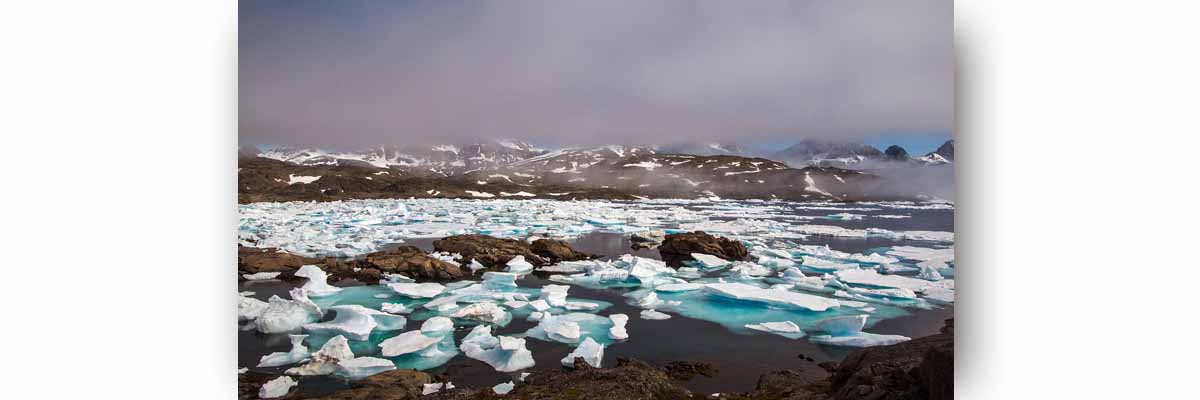A new international study indicates that the Northwest Greenland Ice Stream may be much younger than previously believed. The article, published in the journal Nature Communications and led by the Alfred Wegener Institute (AWI), helps to better understand how ice streams behave and how these changes could affect sea levels in the future. Geosciences Barcelona (GEO3BCN-CSIC) researcher María Gema Llorens contributed to this publication.
The mass balance of the Greenland Ice Sheet has significant implications for global sea-level rise. Between 2002 and 2023, this giant lost about 270 gigatons of ice per year, mainly due to mass loss into the sea through melting and calving glaciers. As a result, global sea levels rose by an average of nearly 0.8 millimeters per year.
Most of this loss occurs through a few ice streams, areas similar to rivers within the ice sheet where ice moves faster towards the sea than in surrounding areas. One of these “rivers” is the Northeast Greenland Ice Stream, known as NEGIS for its English acronym, which extends approximately 700 kilometers inland on the island.
The findings of this research challenge the idea that this ice stream has remained stable in its current form during the Holocene, and show that NEGIS has undergone significant changes during this period. Specifically, the study suggests that the ice steam expanded into the interior of Greenland only about 2,000 years ago “Ice streams can therefore form significantly faster than previously thought,” Daniela Jansen, a glaciologist at AWI, explains. “Accordingly, the speed at which ice flows from ice sheets into the sea and ultimately raises sea levels can also increase very quickly.”
“Our study thus shows that these streams and their variability must be better incorporated into models that calculate future sea level rise. Furthermore, we provide an entirely new structural geological approach to dating such streams. If applied to existing data and planned for future field research, this opens up many opportunities to learn more about the deformation history of ice sheets,” the researcher points out.
To reach this conclusion, the research team used a technique called “radar” to study ice flow. This method works like a scanner that can see inside the ice, showing how it moves and folds. Using the deformation patterns, researchers can reconstruct how the stream developed and when the outflow from the region accelerated. This new methodology can be applied to measure the age of ice streams in other parts of the world and improve models.
“The electromagnetic waves penetrate deep into the ice, spread to the bedrock below, and are reflected there and at certain interfaces within the ice. Based on the travel time and amplitude of the reflected signals, we were able to create a three-dimensional model of the internal structure of the ice stream. It shows how the stream deforms and folds the ice layers.”, Jansen says.
Reference article
Jansen, D., Franke, S., Bauer, C. C., Binder, T., Dahl-Jensen, D., Eichler, J., Eisen, O., Hu, Y., Kerch, J., Llorens, M.-G., Miller, H., Neckel, N., Paden, J., de Riese, T., Sachau, T., Stoll, N., Weikusat, I., Wilhelms, F., Zhang, Y., & Bons, P. D. (2024). Shear margins in upper half of Northeast Greenland Ice Stream were established two millennia ago. Nature Communications, 15(1), 1193. https://doi.org/10.1038/s41467-024-45021-8

